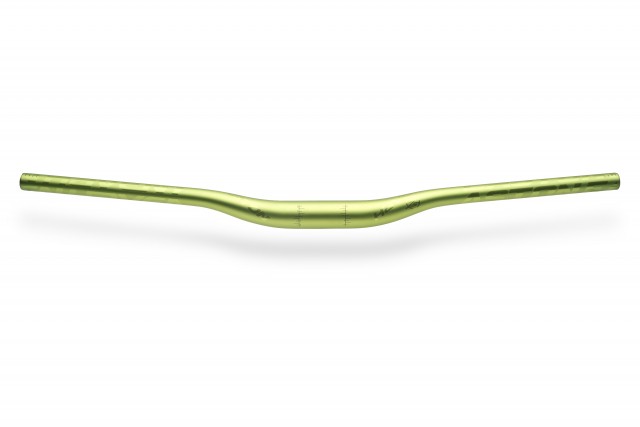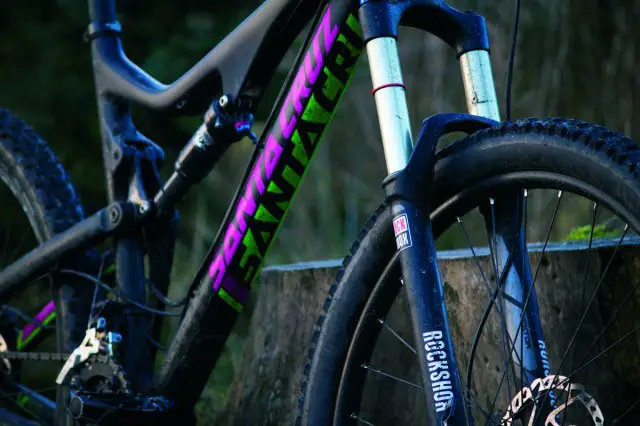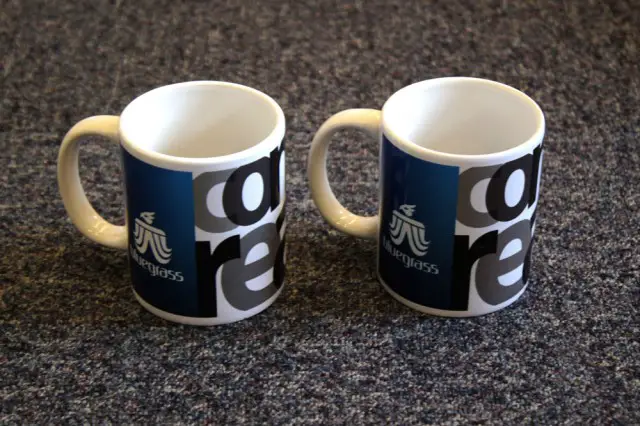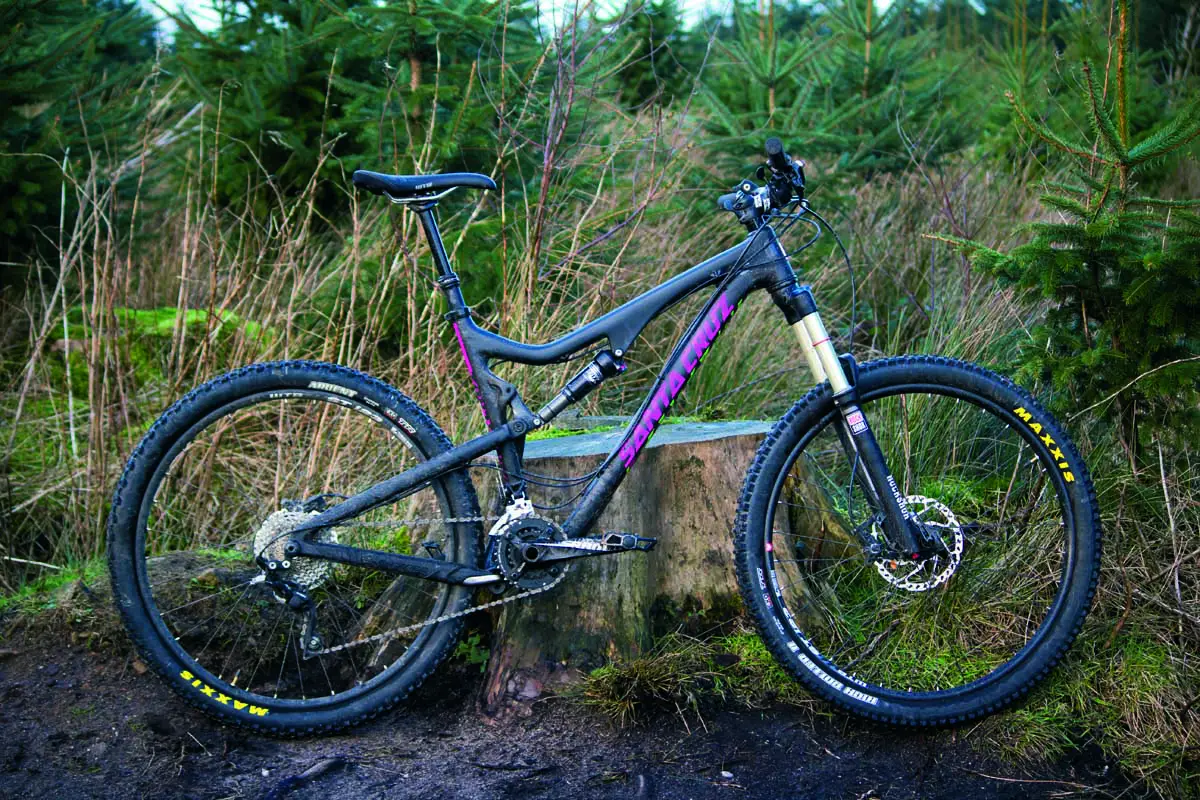The Santa Cruz Bronson landed on the world enduro scene with a huge ‘clonk’ last year. It seemed that this 150mm travel, 27.5in bike was suddenly the only bike to have for this new sport and there were stories of hundreds of them being pre-sold before they hit the shop floors. Certainly, this is the first time we’ve been able to get hold of one for a decent test period.
The bike itself fits naturally in the Santa Cruz hierarchy, with the 5010 model taking up the 125mm travel slot, and the Nomad coming in above at 165mm. There’s also a hierarchy in frame materials too, with the alloy Bronson starting at £2,799 and the Bronson CC (which features cleverer, lighter and more expensive carbon construction) starting at £5,399. 
The R AM build kit on this bike has also been picked with economy in mind, without sacrificing the ride quality. Obvious concessions to price include running a Sektor Gold RL fork instead of the Pike or Fox 34 you might expect, and a ‘carefully curated’ mix of components that meshes SRAM 1000 2×10 cranks with XT rear mech, SRAM X5 front mech and SLX shifters. To be fair, it all gets along pretty happily. A SRAM/DT Champion/WTB combo makes up the wheelset and the tyres are a 2.3in Maxxis High Roller/Ardent combo. Race Face provides the 740mm bars and the stem. 
Trail Notes.
The Bronson has got a bit of a label for itself that it might struggle to shake off. If ‘enduro’ is just the kind of trail riding that normal people do on a Sunday morning, then why is it so hard to think of the Bronson as a normal trail bike? Perhaps it’s due to the exemplary performance of the 5010 model, or perhaps it’s just that the Bronson seems such a specialist, rarified beast? It’s almost a shame to find that it goes uphill and downhill, just like ‘normal’ trail bikes do. 
We used the Fox CTD shock extensively to tame the bike on climbs, especially rougher climbs where, in the lowest of gears, pedal kickback was pronounced. With Trail mode engaged, things were smoother, if a little less supple. Santa Cruz admits that the Bronson isn’t the most subtle of bikes for regular trail use, but once the speed goes up and the bumps get bigger, it comes into its own.
Descents appear to be mapped out better for you, in that there appear to be fewer wrong lines you can take, and the faster you go, the more the bike seems to come alive.
Repeated hits on a favourite trail become launch points for the next fun bits and the bike remains very calm and composed throughout it all. Ridden with more caution and a bit less pizzazz, the Bronson feels a little less helpful, as if it’s only happy with its arse on fire. Thrown around, though, it’s a tough machine that feels immensely robust and capable of taking a true beating.
Overall
There’s little danger of the Bronson being bought by unknowing riders looking for a nippy, forgiving trail bike. Its enduro reputation, burly looks and all-mountain heritage cry out for riders who want to defeat mountain ranges.
Kudos to Santa Cruz for bringing this bike down to the cost of equivalent aluminium bikes from other companies, although it’s not a bike to buy without a clear upgrade path in mind; you will soon find some components lacking in longevity, burliness or ‘enduro-ness’, but that’s to be expected if so much of the bike’s focus is in the very creditable frame.
If you really think you can do it some justice on the downs, then form a queue. If you don’t regularly face rock gardens of doom, then the 5010 might be more your scene.
http://vimeo.com/119443356
Tech Spec
- Frame // Santa Cruz Bronson C
- Shock // Fox Float CTD Evolution
- Fork // RockShox Sektor Gold RL, 150mm Solo air
- Hubs // SRAM
- Rims // WTB STi23 TCS
- Tyres // Maxxis High Roller 2.3/Ardent 2.25
- Chainset // SRAM S1000 2×10 22/34T
- Front Mech // SRAM X5
- Rear Mech // Shimano XT Shadow Plus
- Shifters // Shimano SLX
- Brakes // Shimano Deore
- Stem // Race Face Ride
- Bars // Race Face Ride 740mm
- Grips // Santa Cruz Palmdale lock-on
- Seatpost // LEV Integra dropper
- Saddle // WTB Volt Size
- Tested // Large
- Sizes available // S, M, L, XL
- Weight // 28.82lbs (without pedals)
Review Info
| Brand: | Santa Cruz |
| Product: | Bronson C |
| From: | Jungle |
| Price: | £3329.00 as tested |
| Tested: | by Chipps for |
Comments (0)
Leave Reply
Post Comment








£3.3k, a 32mm stretched Sektor, Deore Brakes, Rebadged hubs, CTD Evo shock.
The same money would get you a carbon Spectral with Pike RCT3, Sram X01 Drivetrain, DT Swiss Wheels, and a Cane Creek DB Inline.
I wonder how much business the likes of Direct Sales brands are chipping away at the ’boutique’ market, and when the tipping point will happen.
Hopefully not too long 😉
It’s not steep, but it’s not slack by today’s standards.
Wandery steering is more likely caused by tall front ends (often caused by forks that don’t like to sag), short top tubes and slack seat angles (which can be exacerbated by an unsuitably damped/sprung shock. To assign head angle and bike weight as prime culprits does seem a bit odd. Especially when the head angle could be seen as ‘normal-to-steep’ for an enduro race bike.